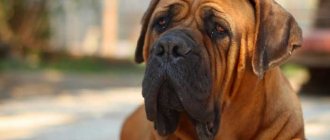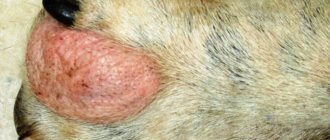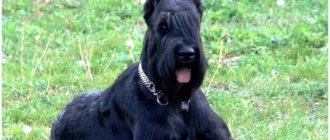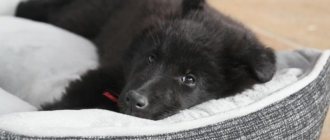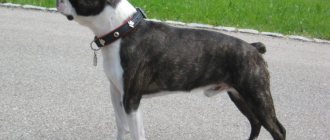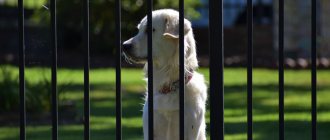The day when a dog appears in the house will, without exaggeration, become a significant day in the family. It happens that, growing up and turning into a not so cute clumsy puppy, an adult becomes a burden for the owners. Sometimes an adult animal is given to another family; cruel owners are able to drive the animal out onto the street. In most cases, the reason is simple: when planning to get a dog, the future owner did not think at all about choosing a breed, taking into account his own lifestyle and capabilities. When purchasing an animal, try to carefully analyze your financial capabilities, level of employment, conditions that you can provide for the puppy and start choosing.
Buying a dog
If you are interested in how to choose a dog breed, analyze your chart and answer a series of questions that will make it easier for you to choose a breed. Having an animal in the house requires:
- Additional finances. Assess your own financial situation. Will there be enough finances to provide a normal life and adequate nutrition for a newly-made family member?
- Time devoted to a dog of any breed. Requires free time for daily care. The dog requires attentive and careful care, otherwise the pet’s health will begin to deteriorate and its appearance will change for the worse.
- Each puppy certainly brings “joy” to the owners in the form of chewed shoes, piles on the carpet, torn wallpaper and “updated” furniture. It is necessary to evaluate your strength and nerve cells in the ability to perceive spoiled things in the first months of the baby’s life.
- Answer yourself for what purpose the dog is purchased. Do you need a companion, a security guard for your home, or are you planning to become a professional breeder and earn money? There may be no need to purchase an expensive purebred dog if you simply want a companion and friend.
- Sometimes the appearance of a four-legged friend requires the owner to change their daily routine. Will a person be satisfied with such a decision? For 10-15 years, the dog needs to be walked daily, and the walks are supposed to be long. You will have to conduct classes with your pet every day and devote a lot of time and attention to games and education.
- When choosing a dog for your soul, take into account the composition of the family, find out about the presence of allergy sufferers among family members.
- Living conditions (apartment or country house with a plot). Does your living space allow you to have a large breed dog or is it better to limit yourself to a decorative dog? It is hardly appropriate to keep a Labrador or a German Shepherd in a one-room Khrushchev house.
- It is important to consider in advance the possibilities of leaving the dog in another home in case of a necessary departure.
When selecting a breed, answer the questions above honestly and keep in mind that the dog is supposed to have only one owner. Otherwise, the animal will not receive the required education, because it will not understand who to obey. An ill-mannered adult is a headache for owners. When getting a dog, be prepared to accept responsibilities in raising your pet. When preparing a gift, ask the person if he is ready to give half of his time to the little fool.
If a person is confident in his desire and has correctly assessed his own capabilities, an immediate purchase is undesirable. From this moment, a new stage of thinking begins, which dog to choose, decide on goals, size and breed. When choosing a dog, it is important to think through the nuances, including the wishes of family members. Remember, disagreements when choosing a breed or other aspects must be resolved amicably, otherwise the appearance of a long-awaited dog for some family members will negatively affect others. The choice of breed is certainly carried out jointly.
Test: how to find one for yourself?
In order not to make a mistake when choosing a tailed partner, you can fill out a kind of test. Fill out all the columns and select the breed that meets all the criteria.
| Appearance | Character | Special requirements | What is it for? |
| Big or small? Fluffy or short-haired? | Obedient, active, calm, smart... | Think about what you will not tolerate under any circumstances: daily brushing, eye care, walks?.. Write down exactly what you want and what you agree to. | What kind of dog do you need: companion, friend, guard, jogging buddy? |
Using these criteria, it is easy to select the right breed.
All about how to approach buying a pet
Owner's character
Evaluate yourself as a person.
Active athletes and quiet housewives need different dog breeds. There are a number of breeds known that only strong and strong-willed people can handle. Popular decorative breeds will require a lot of time and attention, and are capable of causing scenes of jealousy if someone decides to get closer to their beloved owner or mistress. If a person has a high degree of activity and is considered a follower of an active healthy lifestyle - he loves cycling, jogging, rollerblading, an active, agile and nimble representative of the dog breed will be suitable. For example, Irish Setter, Husky, Greyhound Italian Greyhound.
Let the calm and balanced future owner take a closer look at retrievers or pugs. Business active people with a strong-willed character can purchase a German Shepherd, Doberman or Rottweiler.
If you are thinking about purchasing a decorative breed, remember that indoor pets require significant attention. Capable of being stubborn, extremely nervous and sensitive.
Most dog trainers and breeders recommend adopting a small puppy. Obvious difficulties with raising and raising are foreseen, but there is firm confidence in the upbringing and disposition of the pet. Some people prefer to adopt an adult dog to avoid the hassles of growing up, hassling with vaccinations, and childhood diseases.
Adult dogs compared to puppies
Another important characteristic to think about is age. Many people choose to get puppies for many reasons, not the least of which is that they are very cute and irresistible. Some people believe that raising a dog from a puppy will create a stronger bond between you. But training and caring for puppies can be hard work, and their ability to test your patience knows no bounds. On the other hand, older dogs are already toilet trained and prepared for life with people, not to mention the fact that the period of “destroying” and “chewing everything in sight” during teething is long gone. Typically older animals have no problem forming strong bonds with a new family unless they have a history of trauma (which can also be dealt with).
Distinctive features of different breeds
By purchasing a dog, a person acquires a new family member. When choosing, the vast majority of people first of all pay attention to the appearance of a potential four-legged friend. However, few people take into account the fact that dogs have different characters and behavior patterns. Let's take a closer look at the signs that are important when choosing a purebred friend. Here are a dozen smart and intelligent dog breeds:
- Collie.
- Poodle.
- German Shepherd.
- Rottweiler.
- Doberman.
- Labrador, golden retriever.
- Schnauzers.
- Spaniel.
- Belgian Shepherd.
- English cocker spaniel.
Think about your preference - male or female.
There are advantages and disadvantages in both cases. During the spring spree, the behavior of the bitch changes noticeably, the males behave a little calmer. Think about whether fussing with your offspring is included in your plans. Males in this regard are less problematic, but are more often self-sufficient and independent. Any dog requires coat care. Select breeds require constant brushing and grooming. If you plan to keep a pet in an apartment, be prepared to constantly remove hair from the carpets. Consider the possibility of allergic reactions to dog hair in family members. Poodles are considered low-allergenic to humans.
Short-haired or long-haired
The difficulty of grooming depends greatly on the type of coat. Long-haired and fluffy four-legged animals look very elegant, but their hairs constantly get tangled and catch dirt. This problem is less common in short-haired animals.
If you have allergies or a strong love of cleanliness, it is recommended to pay attention to the severity of shedding. The thicker the undercoat, the more fluff there will be. The overall length of the coat does not affect this process, and among long-haired dogs you can often find hypoallergenic ones.
Gender of the dog
This is an important nuance; males and females require different care. Both genders exhibit positive and negative traits.
Bitches
According to dog experts, female dogs are often emotionally unprotected and become much closer to humans than individuals of the opposite sex. It is believed that girls perceive educational procedures more easily, are flexible, and, with the appropriate documents, are used for breeding puppies. The female is attracted to male dogs no more than 2 times a year, and the presence of admission opens up the possibility of breeding for the owners.
Added to the obvious disadvantages of keeping female dogs are the danger of unplanned pregnancy and estrus. Difficulties with false pregnancy and complications associated with this are often noted. If you do not plan to breed puppies, you should think about sterilization. There is no need to talk further about care and increased attention during pregnancy.
Males
Males are emotionally more assertive, energetic, characterized by recklessness and uncontrollable joy. We are happy to give our owners positive emotions every day, without giving them peace. Among the positive qualities of a male dog are increased activity and the absence of difficulties associated with pregnancy. There are no restrictions regarding participation in competitions and exhibitions, which is explained by the highest degree of compliance with breed standards.
Disadvantages include increased interest in the opposite sex, all year round. The desire to dominate and take a leading position is expressed. The education of a male dog, mainly of a service breed, should be given increased attention. With the right and clear approach, they can show stunning results as a result of training.
Purebred dog or mongrel?
If you need a dog for the soul, and not for breeding, then instead of buying an expensive purebred pet, you can choose a mongrel puppy. A mongrel can be purchased through an advertisement, found on the street, adopted from a homeless animal shelter or from friends. In this case, you should try to choose a healthy puppy in order to avoid the hassle associated with its further treatment. Mutts are often cute, but their behavior is always unpredictable. Although many of these dogs have undergone strict natural selection and have good health, they are crossed with genes from completely different ancestors, and therefore it is unknown what surprises can be expected from one or another combination. But no one will have a second pet exactly the same. The process of growth and development of a mongrel puppy is a very exciting experience. At first he may look like a spaniel, and after a month - like a collie. Even the position of a mongrel's ears after reaching adulthood cannot be predicted.
Dog age
Without being an experienced breeder, never get an adult. The best dog for an amateur will be a small puppy raised by himself. Try to instill in the dog the correct behavior, smooth out the rough edges in its character, and adapt it to the conditions of being in the family.
It is problematic to do everything described with an adult dog. The adult has developed a permanent character and is accustomed to certain conditions of detention. It is difficult, sometimes impossible, to remake an adult individual for yourself.
The only plus. An adult animal (with good upbringing, of course) will not allow itself to make a puddle in the middle of the corridor, chew shoes and damage furniture. This is an already trained adult dog, with instilled norms of behavior.
Is it possible to adopt a mongrel?
Unfortunately, not all owners are distinguished by conscientiousness and love for their four-legged friends, so the dog, which until recently lived at home, ends up abandoned on the street. A merciful person has a desire to shelter him, but how to do this correctly.
If a person decides to adopt a mongrel, then before taking it to his home, he should contact a veterinarian, who will take all the necessary tests and assess the animal’s health level. If a disease is detected, he will prescribe a course of treatment.
Perhaps at first there will be difficulties with living together, because the dog is used to responding to a certain name, has its own habits and formed character, but if the owner shows love for him and finds a “common language” with the pet, then training will not become complicated.
A mongrel dog will become a family friend just like his purebred brothers.
Choosing a dog is an extremely responsible undertaking, because in this case you need to select not just an animal, but a family friend who will delight the household with his behavior for many years.
Choosing a dog for an apartment
People get dogs to have a best friend and helper in psychological matters. It’s not boring to play sports with a dog, it’s fun to go fishing or hunting. But when getting a pet, it’s rare that a person will think about the comfort of a dog’s stay in a city apartment.
Having a large breed of dog as a pet in an urban apartment is unsafe and difficult. The dog will need to be walked, and in places where there are no people or other animals. Agree that there are catastrophically few such places in cities. Secondly, a large dog needs a large space, with its own place and personal territory. This is difficult in apartments with a total area of 40 square meters, where, in addition to the dog, there is also a human family. Medium and small breeds of dogs are mainly suitable for keeping in city apartments.
The nuances of keeping dogs in an apartment
- Walk. An adult dog needs to be walked 2-3 times a day, and one walk is supposed to be long. In urban conditions, it is not recommended to let the animal out into the street without the supervision of the owner (as is practiced in villages and villages); this poses a danger to the dog and surrounding people.
- Vaccinations. If you want to have a healthy dog and minimize the risk of contracting infectious diseases in your family, you will have to get regular vaccinations. A domestic dog is often shown to a veterinarian; the animal is more susceptible to diseases and ailments.
- Training. You should not neglect the education and training of city dogs. This is much more important than training a wolfhound sitting on a chain in the village.
- Safety. People who keep large service dogs in their apartments have a responsibility to ensure the safety of those around them. An untrained and uncontrolled animal poses a great threat to the life and health of neighbors.
Medium breeds
There are many medium-sized dog breeds for apartments. Let's look at the popular representatives of the subgroup.
- Poodle. A beautiful, smart and cheerful animal will become a beloved family member. It is recommended to purchase this breed of dog for families with children. Often, older single people choose a dog breed because of its kindness, sincerity and balance. The only difficulty in keeping it is regular coat care. The poodle needs to be combed daily and, if necessary, cut.
- English cocker spaniel. Since ancient times, the dog was intended for hunting, but today it is common in apartments. This is a kind dog breed that gets along well with children and other pets. Does not require special efforts in education and training. Unpretentious and smart. Before buying a breed, keep in mind that the English Cocker Spaniel needs long walks, and the dog is also given time to run around as much as possible.
- Boxer. An intelligent and willful dog will bring a lot of joy and happy moments in the life of a family. The dog breed demands respect. There are no shortcomings of the breed, except for the fact: when raising a puppy, you will need to constantly support the owner's leadership.
Small breeds
Small breeds of apartment dogs serve as both friends and protectors.
- Pug. Funny dogs willingly become family members. They are able to support the child in the game, help mom concentrate in the kitchen and enjoy watching football on TV with dad. It is unlikely that you will find a more sociable dog. Pugs are reluctant to train, but they are able to understand a person at first sight, provided there is complete mutual understanding.
- Scotch Terrier. In ancient times, it was a hunting breed of dog, but thanks to its excellent watchdog qualities, the dog became a domestic dog. The Scottish Terrier is a wayward dog, distrustful of others and rarely accepts more than one owner.
Small dog breeds for apartments
Small breeds of dogs for apartments are becoming very popular today. Dogs are often bought as an addition to the graceful appearance of the owner or owner.
- Pekingese. It is considered the best representative of small dog breeds intended for living in an apartment. The Pekingese is unpretentious in food, unobtrusive, uncapricious and always adapts to its owner. To keep your dog looking its best, it is important to keep its coat clean and smooth.
- Toy Terrier. The most popular small domestic dogs today. The babies have a capricious character, are unfriendly to strangers and are often susceptible to diseases. If you decide to purchase a toy terrier, you should be prepared to give the dog exceptional attention and care.
Smooth-haired and long-haired dogs
Undoubtedly, smooth-haired dog breeds are more suitable for apartments than long-haired ones. They do not require a picky attitude towards their fur, do not shed and do not bring back attached burrs from a walk. But smooth-haired dogs also need coat care. Dogs are supposed to be brushed with special brushes.
Calm dog breeds are recommended more often than mischievous ones for keeping in an apartment. Quiet representatives of dog breeds are considered: collies, Labradors, and retrievers.
Choice of breed: in cramped conditions, but don’t be offended
People often choose a small breed dog because they have a small apartment. In fact, this criterion is not as important as is commonly believed. The dog perceives an apartment or house as its den in which it rests. Of course, the Great Dane takes up much more space than the Yorkshire Terrier, but that’s where all the differences end.
Running around and active games in an apartment of any size are equally destructive, no matter what size the dog is. For all this there is a walk, and this is what you should soberly evaluate first. If you only have a small yard full of cars, then you should not get a large and/or active dog that needs a lot of room to move.
However, we must remember that any animal will be happy with the space, because it needs not only physical activity, but also constant knowledge of the world. Therefore, it is advisable to take even a small dog out into nature more often or take it for a walk in the park.
Defining goals
To choose the right dog breed, you should decide on the goals of getting the animal. Do you want to see the dog as an excellent watchman and security guard, or a magnificent and faithful companion, or just a small, affectionate four-legged friend.
Analyze whether desires correspond to possibilities. If you want to get a representative destined to become an ideal guard, think about whether you have time to train your pet.
When choosing a small dog for your soul, keep in mind that selected decorative breeds are physically unable to tolerate loneliness. From constant loneliness, dogs get sick and their character deteriorates.
If you have never owned a dog before, you should not get representatives of aggressive breeds that require constant strictness. Dogs often begin to challenge their owner's right to leadership in the family.
How to choose a healthy puppy
All the preparatory stages are over and the exciting moment of directly choosing a dog has arrived. How not to make a mistake and choose a healthy puppy? First, watch how the puppy behaves. Healthy babies are active and inquisitive, they strive to explore everything that comes into their field of vision.
- Reach out your hand to the puppy and watch his reaction. A mentally balanced baby will sniff the hand and may try to taste it. Aggressive puppies will begin to growl, and timid ones will hide;
- Secondly, take a closer look at how the dog moves. If the puppy moves uncertainly, falls to the side, jumps like a bunny, throws back its head or shakes, then this is most likely a sick animal;
- Third, examine the puppy's eyes, ears, teeth, fur, and anus. A healthy baby's mucous membranes are an even pink color, his eyes are clear and vibrant, his ears are clean, his fur is uniform without bald patches, and there should be no traces of feces on his bottom.
If you have any doubts about the puppy's health, it is better to postpone the purchase and contact another seller.
Remember that a dog is not only a person’s friend, but also a reflection of the essence of its owner. Therefore, choose a ward who matches yourself, your character and lifestyle. Then it will be much easier for you to find a common language and establish contact with your four-legged friend.
Guard dog
Progress does not stand still. Despite the use of high technology, people, as before, strive to have a dog capable of guarding the territory. Statistics show that most intruders are much more influenced by the presence of a formidable guard in the form of a dog than by a security alarm and CCTV cameras.
For hundreds of years, leading positions in the field of protection have been occupied by shepherds and fighting dogs, for example, boxers, mastiffs, and Rottweilers. Do not think that only the listed breeds are suitable as guards. For apartment living, it is better to choose a less dangerous and calmer variety of guard dogs. For example, a bulldog or sharpei becomes full-fledged apartment security guards and wonderful companions.
When choosing a dog to guard your home, consider the needs and size of the animal. Guard dogs are designed to constantly exercise and move. Dogs are given space. These dogs are not kept on a chain. An aviary would be an ideal place. Pets will require a lot of owner's time. You will have to provide:
- Daily long walks, preferably without a leash.
- Daily workouts.
- Strict daily routine regarding feeding.
Watchdogs are required to undergo socialization, and at an early stage of life, otherwise people and animals in the area will have a hard time. Choosing a dog to guard your home does not just mean purchasing one. Without special attention, such dogs will instantly turn into uncontrollable monsters. Consider the fact that a guard dog will not survive without a lot of free space.
Owning a representative of a guard breed in an apartment environment will require the owner to take constant and long walks. Moreover, a spacious area, fenced or remote from people, is selected as a walking area. A guard dog is supposed to be let off the leash so that it can run around and burn off its energy. Private territory will allow you to avoid these difficulties.
Centenarians
Dogs live five to seven times less than us. But among them there are relative long-livers. Tibetan mastiffs , having excellent health, sometimes live up to almost 20 years. In this sense, they are record holders among their brothers. True, in order for the Tibetan mastiff to live so long, it is better for him not to leave his native place.
The Tibetan mastiff is a giant: he is the only one among such centenarians.
In general, small dogs live long : pugs, chihuahuas, Pomeranians, Shih Tzus, dachshunds, Yorkshire terriers, Pekingese. Of the medium-sized dogs, the collie and the Australian shepherd have a fairly respectable life expectancy.
But, unfortunately, there are many more short-lived dogs among dogs . These are almost all large and medium-sized breeds. Sennenhunds or American bulldogs, greyhounds or Karelian huskies live no more than 10 years, more often - 8-9 years.
The famous gluttons also have a very short life: boxers, staff terriers, and bulldogs. Both shepherd dogs and hunting dogs have nothing to boast about in this regard. Only sled dogs fare a little better: they sometimes live up to 15 years.
Life expectancy is very individual and depends on many factors, so both the Dachshund and the Spitz, capable of living a long time by dog standards, sometimes die prematurely. Still, for those who are affectionate and aware of this weakness, it is better to choose one of the breeds classified as long-livers. By the way, mongrels are like that too





